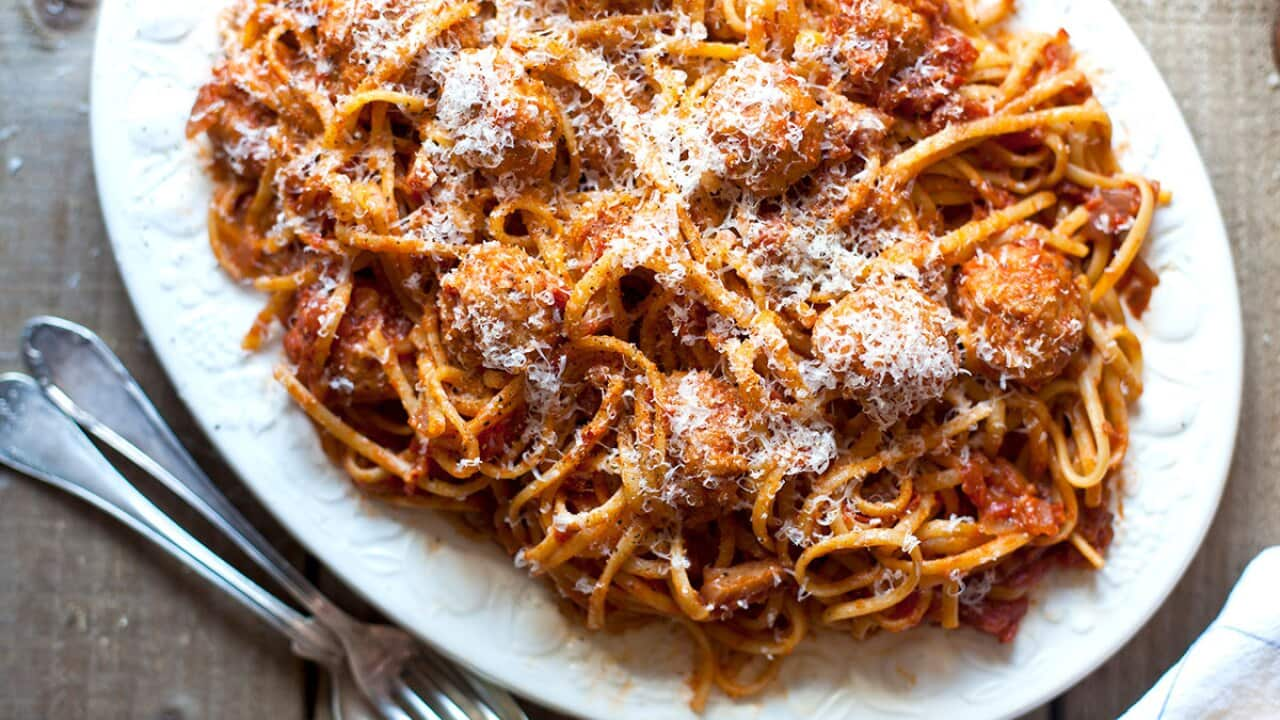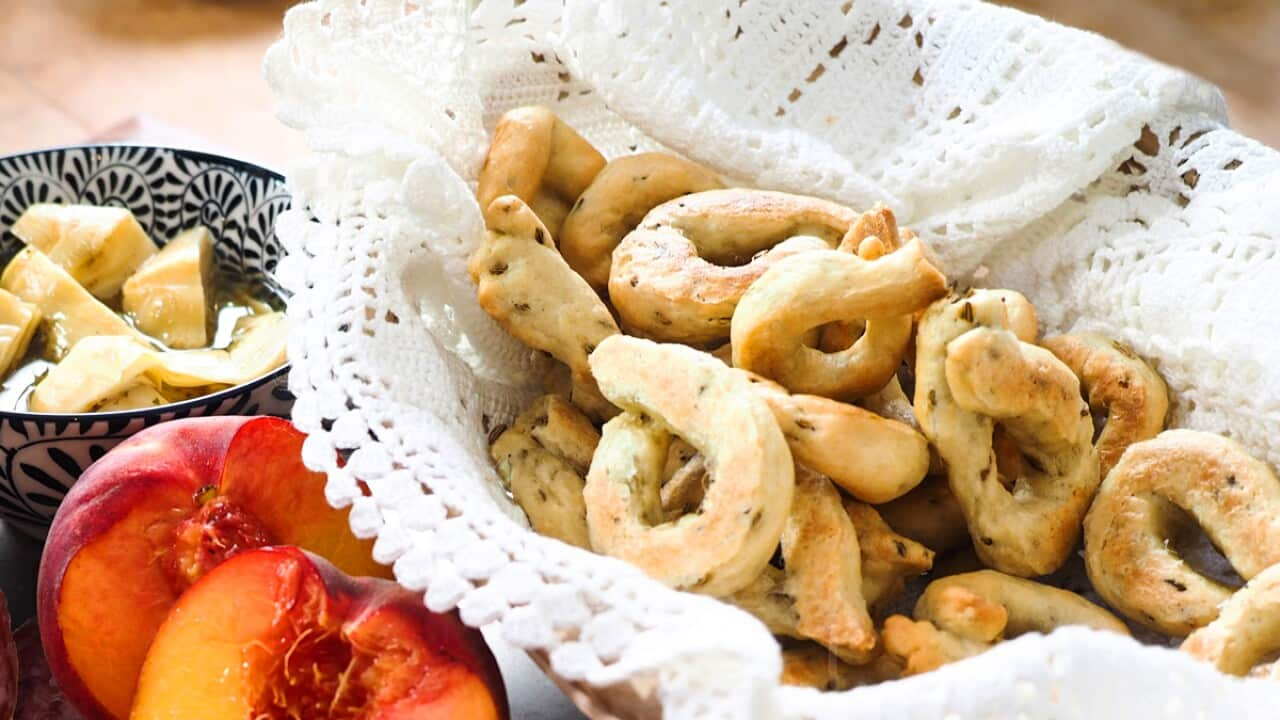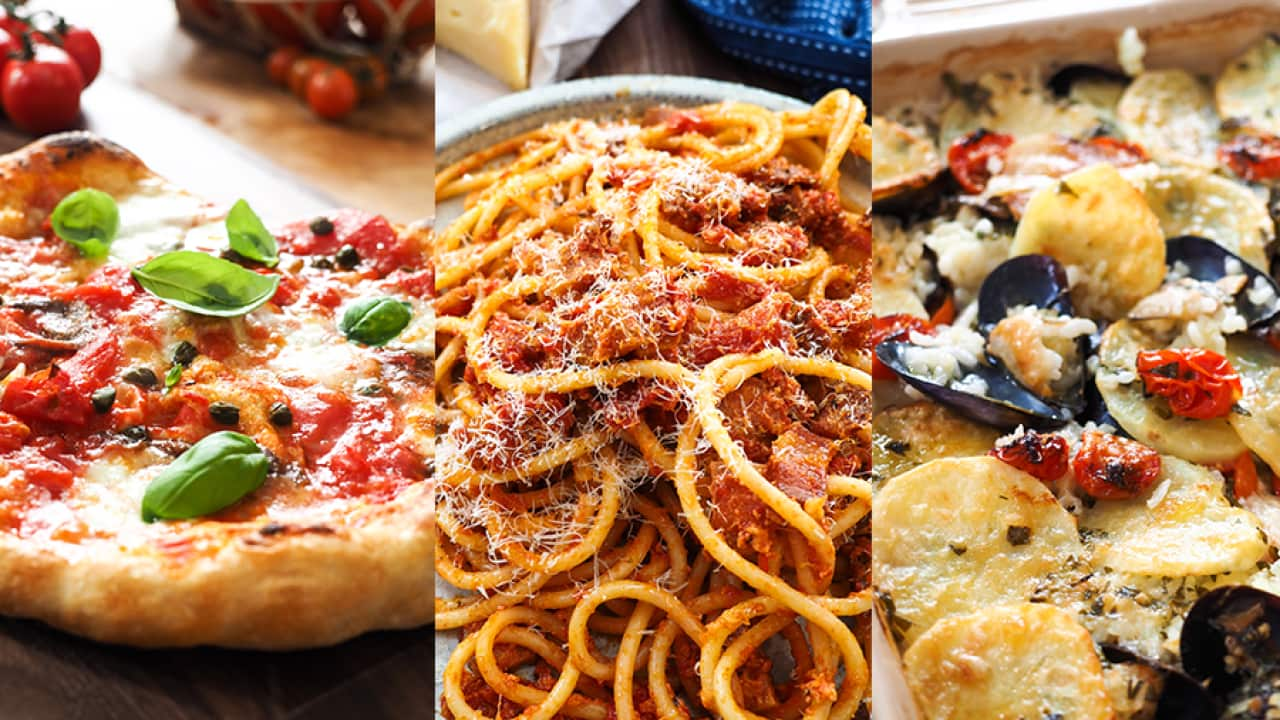--- Discover Italy's other beloved dishes deemed 'too ugly for Instagram'. Listen to , a podcast from SBS Italian, on , , , or the .” ---
Nicola Dusi wishes there was a better translation for his hometown dish than "mixed boiled meat".
"In my dialect and Italian, talking about this kind of food makes sense, but if I translate it to English, it doesn't sound appealing at all," he says, laughing.
If you let go of the name, you'll find that is the perfect feast during the cold season. Originating from the north of Italy, the dish consists of several cuts of meats simmered for hours and served with a variety of sauces.
Dusi explains, "For most people, in Verona, bollito misto is the dish that's been served in every household.
"If you like braised, slow-cooked stuff, this is a feast. I don't think there are many other traditional dishes with five or six different meats and four or five sauces."
Now the chef and co-owner of in Melbourne, Dusi grew up just outside northern Italy's Verona where bollito misto is traditionally served for Sunday lunch, especially through winter.
"My grandmother from my father's side was a horrible cook. A beautiful woman, but a horrible cook. She didn't like cooking, but we would always go to our house on Sundays for bollito misto. Luckily, my mom would always take over the cooking," he recalls.
I don't think there are many other traditional dishes with five or six different meats and four or five sauces.
The size of the dish depends on the occasion and the number of guests. "If it's just a Sunday lunch, you might find just one or two meats, but if it's an occasion like celebrating a birthday, you'll have more variety," he explains.
However, Dusi is adamant that or ox tongue needs to be included for the dish to be called bollito misto.
Cotechino is a fatty sausage made with pork mince, pork rind and spices. It's simmered for several hours in salted water. Other cuts like veal tendons, headcheese, a whole hen, beef rib, flank and rump, are simmered in a broth.
"It's a dish that was born of the necessity of using second quality cuts. You'd never use a chicken you can roast," Dusi says. Sauces are a fundamental element of the dish. (herbs, capers and garlic) and (tomato and capsicum) are popular across northern Italy, but the people from Verona do things a bit differently.
Sauces are a fundamental element of the dish. (herbs, capers and garlic) and (tomato and capsicum) are popular across northern Italy, but the people from Verona do things a bit differently.

Nicola Dusi grew up just outside Verona, where bollito misto is traditionally served for Sunday lunch. Source: Josh Robenstone
"What makes bollito misto typical of Verona, what makes it different, are the sauces we serve with it," reveals Dusi.
is a must. The sauce made with bone-marrow breadcrumbs and chicken stock is seasoned with a lot of pepper.
"This is normally cooked in a clay pot and the thick crust that forms at the bottom is awesome, and kids often end up arguing over it. This is one of the few recipes found only in Verona, and people are extremely proud of it," says Dusi.
Sides of cren (horseradish sauce) and (candied fruit in mustard syrup) help cut through the richness of the dish.
At home, bollito misto is served family-style; the chopped meats and sauces are placed on the table and people serve themselves.
"In the unlikely event that the nonnas and mammas don't want to cook for the Sunday lunch, you can head to traditional restaurants serving bollito misto. Waiters push around massive battery-powered carts designed to hold all the meats to ideal service temperature," explains Dusi.
"The waiter gets to the table and in a fashion similar to yum cha, he will ask each diner if they would like a 'misto', meaning a selection of all meats served with pearà, or just individual cuts."
When Dusi makes the dish in Melbourne, he sources cotechino from and the other cuts of meat from .
You might see bollito misto as a special at The Hardware Club in the future, but the restaurant is temporarily closed due to COVID-19 restrictions. Dusi is still in the kitchen, working with Alex Makes Meals . You can also follow his adventures in (hello samosa loaf and brie-oche!) on Instagram until the restaurant reopens.
Bollito misto
Serves 4-6 people
This will take the whole morning if you want to cook a worthy bollito. If you enjoy cooking for large groups and like me, rather spend time attending a few pots of boiling deliciousness than going to the beach, this is the PERFECT recipe for you. It is cold out anyway, roll up your sleeves and let's get started. Tell everyone you'll be busy and to leave you alone.
I've made it a little easier for you where I could follow step by step so that everything comes together nicely towards the end. Sauces, meats and other bits can all sit there for a bit while you wait for all your guests to arrive, and you can serve the whole thing in one go and sit at the table with them
Ingredients
- 1 Cotechino, (500 g at least)
- 1 kg beef rump (or brisket, flank or shin. Tell the butcher you'll braise it for an hour
- 1 veal tongue
- 80-100 g bone marrow
- 1 old hen (tell your butcher you'll boil it)
- 1 litre beef stock
- 1 celery
- 4 carrots
- 4 onions
- 200 g fresh horseradish (or store-bought horseradish cream)
- Black peppercorn
- Salt
- Bay leaf, dry or fresh
- A bunch of parsley
Pearà
- 200 g breadcrumbs (ideally from stale bread, processed)
- 80 g bone marrow (you can use butter instead here)
- 1 litre beef stock (you can use store-bought and save the stock you'll get from braising the rump for next time)
- 12 g salt
- 15-20 grains of black pepper, more if you like it more seasoned
- A handful of Parmigiano or Grana Padano
1. Melt the bone marrow, add the breadcrumbs and toast lightly
2. Add the beef stock, bring to the boil, turn on the lowest setting and cook for 2-2.5 hours
3. You only need to stir every half an hour or so, you want the bottom to form a nice thin crust.
Cotechino
1. Bring a small pot of water to the boil and blanch the cotechino in it for 2 minutes
2. Add the veal tongue in there too, so you don't have to use two separate pots. Cook for further 5 minutes
3. Strain the meats and drain the liquid. Start a fresh pot of water, add a handful of salt.
4. Cook on low for 2.5 hours.
Note: Please DON'T think that cotechino sausage will give you a nice broth, cause it won't.
Beef
1. Lay the beef into a pot large enough to hold the chicken as well (you'll add it to this same pot in about an hour), cover with water.
2. Add one chopped up carrot, one chopped up onion and some celery. A handful of black peppercorn, parsley stems and bay leaf.
3. Bring to the boil, add one large handful of salt, turn on low and cook for 1.5 hours.
Tongue (you can start this and the beef and chicken together)
1. Cover the tongue with some freshwater, add some black peppercorn, a large handful of salt, 1 carrot and 1 onion and bring to the boil.
2. Turn to low and cook for 1.5 hours to a very low simmer. Stick a knife vertically in the thickest part and try to lift the tongue out of the stock, if you can't pull it while keeping the knife vertical then it's ready. Flick a lid on the pan and set aside.
Chicken
1. Put the chicken in the beef pot and cook for one hour.
Cren
- 200 g fresh horseradish, peeled
- 75 g vinegar
- 15 g sugar
- 30 g extra virgin olive oil
- 100 g white bread, soaked in the vinegar and olive oil
1. Peel the horseradish, grate on the smallest grater you have available.
2. Cut the white bread crust off and chop and add to a jug, soak with the liquids.
3. Grate the horseradish, add to the jug with the bread and blend with a stick blender.
4. Add a little water if necessary.
Assemble
1. Drain cotechino and tongue and discard liquid. Wash one of the pots.
2. Remove chicken and beef from the stock, Strain the liquid through a fine sieve into a clean pot and bring to the boil. Reduce for 10 minutes, season with salt if needed and put all the meats back in the pot to keep them hot.
3. Taste the pearà and add the black pepper and the Parmigiano.
To serve
Ladle some of the delicious stock into bowls, season with Parmigiano and a little extra virgin and start your guests' meal with that. You can add a little pasta to this if you wish.
Get the largest serving dish you have.
1. Peel the tongue and slice thinly, lay on one side.
2. Cut the chicken in 6/8 pieces, lay on the other side.
3. Cut the beef as thinly as you like, lay in the middle.
4. Cut the cotechino last, I like thick slices but you do whatever feels right.
5. Add a little stock to the serving tray/dish.
6. Bring the pot with pearà to the table, add a little ladle or spoon to it.
7. Remember to bring the horseradish to the party. If you made your own one, you won't forget.
At the end of the meal, if the claypot with the pearà has a nice crust at the bottom try to remove it in once piece with a fork. It will be pretty dark and delicious and taste like a bone marrow chicken toast cracker.
HOW TO EAT ITALIAN FOOD

Cotechino with lentils












